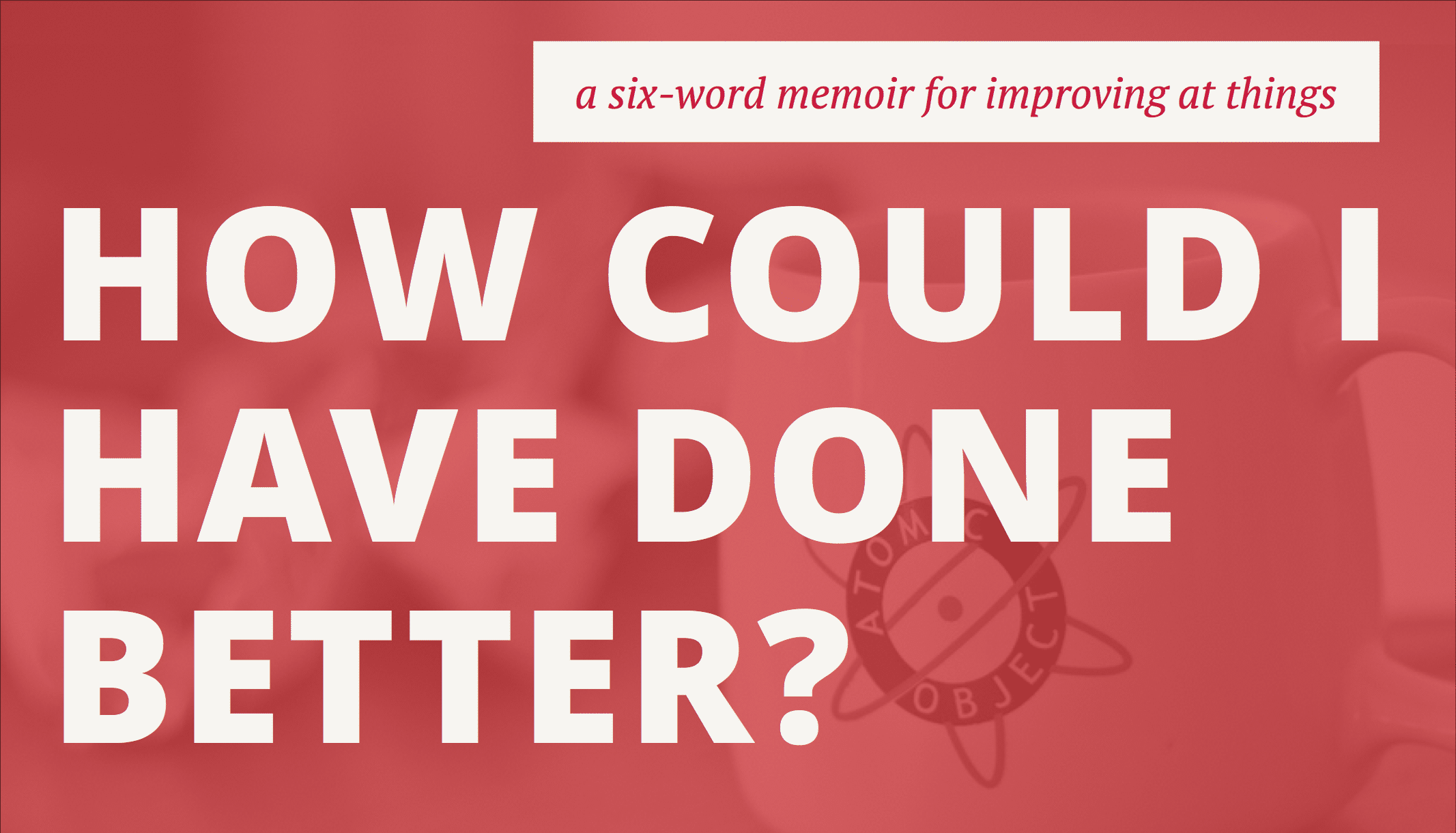
The most successful software teams and makers are the ones who are constantly working to improve their practice. These teams and individuals are not content to do the same thing in the same way if it could be made better. One example of this drive to improve is the practice of Agile Retrospectives. I had never participated in a team retrospective before I joined Atomic, but I quickly came to appreciate the value of having a structure in place that allows a team to reflect, iterate, and improve.
As a result of noticing that value, I’ve created a similar ritual in my own drive for personal and professional improvement. My own personal retrospective comes in the form of a simple, six-word question:
How could I have done better?
I’ve found these six words invaluable. They provide a framework for me to stop and reflect on the daily interactions and events that make up my life… both in my career as a software designer, and in my personal hobbies and interactions.
Moments for Retrospection
One thing I like about my six-word question is that it’s applicable in a variety of situations. I find myself asking it multiple times a day. Like a doctor checks vital signs of a patient, I’m evaluating the health of my actions and interactions. This question has proven helpful for evaluating and improving:
- Presentations to clients,
- Conversations with colleagues and team members (both casual and crucial),
- The act of writing an e-mail or blog post,
- Artifacts I’ve created or code I’ve written,
- Civic engagements, meetings I attend, and the like,
- Presentations I’ve given,
- Personal interaction with family and friends,
- Even things I do for fun, such as distance running, training my horses, painting, illustrating, and lettering.
Identifying Opportunities for Positive Action
I have a propensity to get depressed and to browbeat myself incessantly when things don’t go the way I think they should. My six-word question helps me refocus. Instead of devolving into negative patterns of thinking, it pushes me to identify positive, actionable steps I can take next time to improve things. Counterintuitively, the act of looking for things to do better also helps me identify things I did well. Often, it turns out that an event or interaction wasn’t quite as horrible as I originally thought.
Not Just for When Things Go Wrong
It’s important to note that the usefulness of this question isn’t limited to when things go negatively. Thinking about ways to improve an artifact that was well-received, a conversation that went positively, or a good training session can identify opportunities for fine-tuning the interactions I have and the things that I do.
Taking Action
Of course, no retrospective practice would be worthwhile if that was the end of it. Depending on what type of activity I’m looking to improve, I may write down my observations on a notecard or in my notebook (or record them in Evernote) so I can reference them next time I’m about to start on a similar activity. Other times, the simple act of reflecting can be enough to promote mindfulness of the habits and behaviors I want to engage in.
The end of one year and beginning of another is often a time for reflection and goal-setting. I hope that by sharing my little retrospective practice, I’ve sparked some thoughts that might be helpful to you. I’d love to learn about your practices for improvement. Please share them in the comments! And have a productive, happy 2014!
